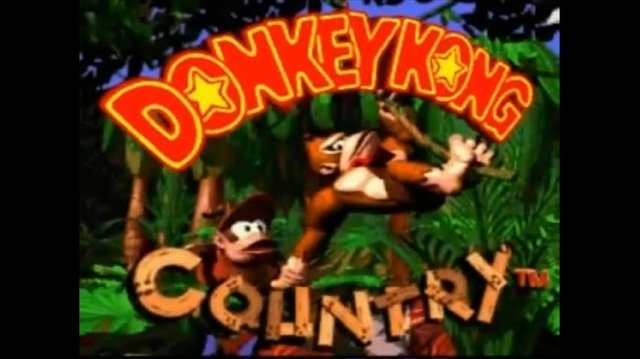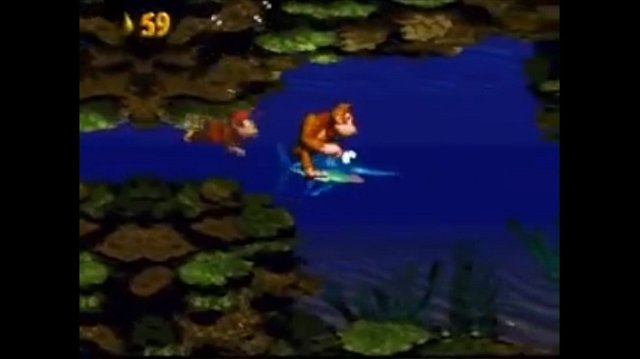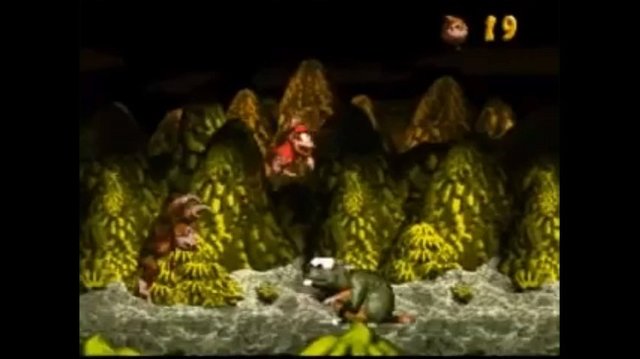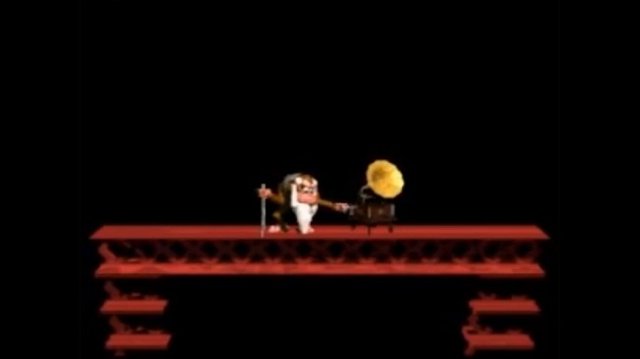Donkey Kong Country Review (SNES, Wii)
Back before the days when Nintendo was a company that focused almost exclusively on the casual market, leading to both innovation and failure in the process, it was taking the gaming world by storm with the Super Nintendo Entertainment System. The follow-up to the enormously popular NES, which many credit with saving the American gaming industry, was able to match or exceed SEGA’s Megadrive/Genesis in pretty much all areas and boasted a catalogue of games that is still the envy of many a console to this day.
During that time the company also maintained a number of relationships with second-party developers, some of whom would be trusted with developing games related to Nintendo properties. A little UK-based developed named Rare sat at the top of this heap and quickly developed a reputation for creating amazing games, building on the foundation they had created during the British home computer era when they were known as Ultimate! Play The Game.
Arguments could be made that their SNES output was their best, whereas others may point to the N64 era. The game we’ll be looking at today came from the former and was touted as one of the most revolutionary platformers of its time by many a critic.
I’ve Got A Monkey On My Back

Let’s get this out of the way right now – Donkey Kong Country was streets ahead of most other games of its era when it came to visuals. Using digitized graphics, combined with some pretty stellar animation, Rare managed to create a game that looked unlike any platformer of the era. The closest game you can draw parallels to is Mortal Kombat, but even that didn’t manage to pull the graphical side of things off with the level of panache that Donkey Kong Country achieved.
Even today the game is a joy to look at. Sure, it’s dated a little. Any game from the mid-1990s is bound to have done so. However, played with the era in mind one can’t help but marvel at the stunning character graphics.
Unfortunately, the side is let down a little when it comes to the level backdrops though. Many of them don’t contain the verve and quality of the character designs and they tend to merge into one another after a few plays. This is something that would be rectified in later entries to the series and it can be forgiven somewhat here given the rather revolutionary nature of the title, but it is still something that is noticeable. Put it like this, there aren’t all that many levels in Donkey Kong Country that stick out in the memory because of how they looked, regardless of the graphical tricks on display. Instead, you’ll tend to find that the levels that do stick out are also the most difficult.
Monkey Business

Of course, graphics mean little if the game doesn’t play well. This is a platformer starring one of Nintendo’s most enduring icons, so it really has to measure up when it comes to gameplay.
Unfortunately, examined with the benefit of hindsight it has to be said that Donkey Kong Country delivers something of a mixed bag in this area. While the general mechanics work well and there are some interesting ideas – usually related to shooting Donkey or Diddy Kong out of barrels – there is just something a little off when it comes to how the game plays.
This may lie in the character designs. As impressive as they are, they are also pretty big and the way Diddy and Donkey Kong – who are the game’s two main characters – move can sometimes make it difficult to judge when you are on the edge of a platform and when you need to jump. In a game that relies so heavily on pixel-perfect platforming this can become a real bugbear.
However, it is also something that players can adjust to with practice. What is less easy to forgive are the ridiculous difficulty spikes that the game contains. At the time of its release there was a lot of rumour surrounding Shigeru Miyamoto – creator of Mario – and his thoughts on the game. It was generally believed that Shiggsy wasn’t the biggest fan of Donkey Kong Country and didn’t feel as though it compared well to other great platformers of the era.
The blame for this likely lies in those difficulty spikes. Most games are designed to ease players in and gradually up the difficulty as they go along. In Donkey Kong Country there are a number of levels that will have you tearing your hair out in frustration, only for you to then blow through the next few with no issues. The difficulty is all over the place and it can be very easy to give up on a few of the earlier levels that really should have been saved until players were invested in the game and determined to get through the toughest of what it had to offer.
Just Another Battle

Still, for those who want a challenge, and don’t mind that unevenness, there is plenty to love here. The platforming is still fun – at least when you don’t feel as though the game is screwing you over – and progression past a tough level is definitely satisfying, even if it’s also massively frustrating at times. Given the challenge presented by the game, you would expect the boss encounters to offer up brilliance.
However, the sad fact is that the boss battles never cut the mustard or become the epic encounters you would hope them to be. Oftentimes bosses will just take the form of larger versions of the enemies you have already encountered and each has a simple pattern that is easy to decipher, making them all simple to beat.
In a game where difficulty is a primary complaint it seems strange that the easiness of the boss battles would also be an issue. However, they also stand as testament to how uneven the game can feel at times. These encounters should represent the pinnacle of your efforts to complete each world. They should be trials of endurance that test the skills you have developed during the course of the game and each boss should go down after putting up a major fight. Instead you get a whimper, a big banana and a happy ape in no time at all, regardless of whether it’s the first boss or the last.
It’s Not All Bad News

This review has made Donkey Kong Country seem like a pretty bad game so far, but that is far from the truth. When it’s playing fair it plays really well and the idea of being able to take control of both Diddy and Donkey Kong brings some strategy into your approach. Diddy is the more athletic of the two, making him the superior choice for big jumping sections, whereas Donkey Kong’s attacks will work on larger enemies that are capable of deflecting Diddy away.
The game also did an excellent job of expanding the Donkey Kong universe beyond the main man (ape?) being a kidnapper of princesses. New characters are introduced – with Cranky Kong’s fourth-wall busting snark making him an enduring favourite – and the game marks Donkey Kong’s ascent into the upper echelons of the Nintendo pantheon.
The Final Word
In truth, the negatives of Donkey Kong Country are so pronounced because there is a damn good game here. While it would be a step too far to say the game’s problems ruin it, they do add an extra layer of frustration that can, at times, make the game a bit of a sod to actually enjoy. Still, it is a game that stands as one of the better platformers on the SNES - outside of the Mario efforts - and it really should be played. Just be prepared to exercise patience when dealing with some of the irritating difficulty spikes that end up sticking out like the sore thumbs you will be sporting after getting over them.
Loved Donkey Kong games back on Super Nintendo. Fun times.
They were. Despite my issues I still had fun with it, even if found the game a tad frustrating at times!